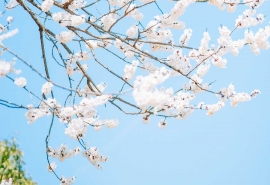
故宫的英语?
故宫的英文是The Imperial Palace,中文地名可以不加the,英译词需要前加the。
音标:[ðə ɪmˈpɪəriəl ˈpæləs]
释义:故宫;御茶膳房
短语
At the Imperial Palace 故宫
The imperial palace figure 故宫人物
Memory of the Imperial Palace 故宫的回忆
Ceremony of the Imperial Palace 第一幕皇宫盛典
Hofburg - The Imperial Palace 霍夫堡皇宫
拓展双语例句1、Once I had stood before the Imperial Palace in the Forbidden City, hat in my hands, waiting for the realization to engulf me.
又一次我曾经站在故宫的大殿前面,手里拿着帽子,等待着现实来把我包围。
2、I showed them to the Great Wall, the Imperial Palace, and the Summer Palace.
我带领他们去了长城、故宫和颐和园。
3、The Imperial Palace is one of the sights of China.
故宫是中国名胜之一。
4、Have you been to the Imperial Palace?
你去过故宫吗?
5、On the second day, you can visit to the Imperial Palace where you can learn more about Chinese history.
第二天,你们可以参观故宫,在那里你们可以学习更多关于中国的历史。
故宫用英文怎么说
故宫用英文怎么说?网上说是The Imperial Palace 我想问这个the是必须有吗 ?是固定搭配吗?故宫的英文是The Imperial Palace,中文地名可以不加the,英译词需要前加the。
音标:[ðə ɪmˈpɪəriəl ˈpæləs]
释义:故宫;御茶膳房
短语
At the Imperial Palace 故宫
The imperial palace figure 故宫人物
Memory of the Imperial Palace 故宫的回忆
Ceremony of the Imperial Palace 第一幕皇宫盛典
Hofburg - The Imperial Palace 霍夫堡皇宫
拓展双语例句1、Once I had stood before the Imperial Palace in the Forbidden City, hat in my hands, waiting for the realization to engulf me.
又一次我曾经站在故宫的大殿前面,手里拿着帽子,等待着现实来把我包围。
2、I showed them to the Great Wall, the Imperial Palace, and the Summer Palace.
我带领他们去了长城、故宫和颐和园。
3、The Imperial Palace is one of the sights of China.&nbsnDXhBawDeLp;
故宫是中国名胜之一。
4、Have you been to the Imperial Palace?
你去过故宫吗?
5、On the second day, you can visit to the Imperial Palace where you can learn more about Chinese history.
第二天,你们可以参观故宫,在那里你们可以学习更多关于中国的历史。
故宫用英语怎么说
the Imperial Palace
英 [ðə ɪmˈpɪəriəl ˈpæləs] 美 [ðə ɪmˈpɪriəl ˈpæləs]
故宫;琼楼金阙。
His description of the layout of the Imperial Palace was so detailed that it was as if he were enumerating the heirlooms of his own family.
他对故宫设计讲解甚详,如数家珍。
The imperial palace is one of the sights of china.
故宫是中国名胜之一。
We can visit the Imperial Palace and learn about Japanese culture there.
我们可以参观皇帝的宫殿,在那了解日本的文化。
Challenges and Opportunities for the Imperial Palace as a World Tourist Destination.
故宫博物院作为世界级旅游胜地的挑战与机遇。
Show a party of tourists round the imperial palace.
带领旅游团参观故宫。
故宫英文导游词,70单词左右。急!
FORBIDDEN CITY(紫禁城)
(In front of the meridian gate)
Ladies and Gentlemen: I am pleased to be your guide today.
This is the palace museum; also know as the Purple Forbidden City. It is the largest and most well reserved imperial residence in China today. Under Ming Emperor Yongle, construction began in 1406. It took 14yearwww.souquanme.coms to build the Forbidden City. The first ruler who actually lived here was Ming Emperor Zhudi. For five centuries thereafter, it continued to be the residence of23 successive emperors until 1911 when Qing Emperor Puyi was forced to abdicate the throne .In 1987, the United Nations Educational, Scientific and Cultural Organization recognized the Forbidden City was a world cultural legacy.
It is believed that the Palace Museum, or Zi Jin Cheng (Purple Forbidden City), got its name from astronomy folklore, The ancient astronomers divided the constellations into groups and centered them around the Ziwei Yuan(North Star). The constellation containing the North Star was called the Constellation of Heavenly God and star itself was called the purple palace. Because the emperor was supposedly the son of the heavenly gods, his central and dominant position would be further highlighted the use of the word purple in the name of his residence. In folklore, the term ”an eastern purple cloud is drifting” became a metaphor for auspicious events after a purple cloud was seen drifting eastward immediately before the arrival of an ancient philosopher, LaoZi, to the Hanghu Pass. Here, purple is associated with auspicious developments. The word jin (forbidden) is self-explanatory as the imperial palace was heavily guarded and off-explanatory as the imperial palace was heavily guarded and off-limits to ordinary people.
The red and yellow used on the palace walls and roofs are also symbolic. Red represents happiness, good fortune and wealth. Yellow is the color of the earth on the Loess Plateau, the original home of the Chinese people. Yellow became an imperial color during the Tang dynasty, when only members of the royal family were allowed to wear it and use it in their architecture.
The Forbidden City is rectangular in shape. It is 960 meters long from north to south and 750 meter wide from east west. It has 9,900 rooms under a total roof area 150,000 square meters .A 52-meter-wide-moat encircles a 9.9-meter—high wall which encloses the complex. Octagon —shaped turrets rest on the four corners of the wall. There are four entrances into the city: the Meridian Gate to the south, the Shenwu Gate(Gate of Military Prowess) to the north, and the Xihua Gate(Gate of military Prowess) to the north, and the Xihua Gate(Western Flowery Gate )to the west ,the Donghua (Eastern Flowery Gate) to the east.
Manpower and materials throughout the country were used to build the Forbidden City. A total of 230,000 artisans and one million laborers were employed. Marble was quarried from fangshan Country Mount Pan in Jixian County in Hebei Province. Granite was quarried in Quyang County in Hebei Province. Paving blocks were fired in kilns in Suzhou in southern China. Bricks and scarlet pigmentation used on the palatial walls came from linqing in Shandong Province .Timber was cut ,processed and hauled from the northwestern and southern regions.
The structure in front of us is the
FORBIDDEN CITY(紫禁城)
(In front of the meridian gate)
Ladies and Gentlemen:
I am pleased to serve as your guide today.
This is the palace museum; also know as the Purple Forbidden City. It is the largest and most well reserved imperial residence in China today. Under Ming Emperor Yongle, construction began in 1406. It took 14years to build the Forbidden City. The first ruler who actually lived here was Ming Emperor Zhudi. For five centuries thereafter, it continued to be the residence of23 succeswww.souquanme.comsive emperors until 1911 when Qing Emperor Puyi was forced to abdicate the throne .In 1987, the United Nations Educational, Scientific and Cultural Organization recognized the Forbidden City was a world cultural legacy.
It is believed that the Palace Museum, or Zi Jin Cheng (Purple Forbidden City), got its name from astronomy folklore, The ancient astronomers divided the constellations into groups and centered them around the Ziwei Yuan(North Star). The constellation containing the North Star was called the Constellation of Heavenly God and star itself was called the purple palace. Because the emperor was supposedly the son of the heavenly gods, his central and dominant position would be further highlighted the use of the word purple in the name of his residence. In folklore, the term ”an eastern purple cloud is drifting” became a metaphor for auspicious events after a purple cloud was seen drifting eastward immediately before the arrival of an ancient philosopher, LaoZi, to the Hanghu Pass. Here, purple is associated with auspicious developments. The word jin (forbidden) is self-explanatory as the imperial palace was heavily guarded and off-explanatory as the imperial palace was heavily guarded and off-limits to ordinary people.
The red and yellow used on the palace walls and roofs are also symbolic. Red represents happiness, good fortune and wealth. Yellow is the color of the earth on the Loess Plateau, the original home of the Chinese people. Yellow became an imperial color during the Tang dynasty, when only members of the royal family were allowed to wear it and use it in their architecture.
The Forbidden City is rectangular in shape. It is 960 meters long from north to south and 750 meter wide from east west. It has 9,900 rooms under a total roof anDXhBawDeLrea 150,000 square meters .A 52-meter-wide-moat encircles a 9.9-meter—high wall which encloses the complex. Octagon —shaped turrets rest on the four corners of the wall. There are four entrances into the city: the Meridian Gate to the south, the Shenwu Gate(Gate of Military Prowess) to the north, and the Xihua Gate(Gate of military Prowess) to the north, and the Xihua Gate(Western Flowery Gate )to the west ,the Donghua (Eastern Flowery Gate) to the east.
Manpower and materials throughout the country were used to build the Forbidden City. A total of 230,000 artisans and one million laborers were employed. Marble was quarried from fangshan Country Mount Pan innDXhBawDeL Jixian County in Hebei Province. Granite was quarried in Quyang County in Hebei Province. Paving blocks were fired in kilns in Suzhou in southern China. Bricks and scarlet pigmentation used on the palatial walls came from linqing in Shandong Province .Timber was cut ,processed and hauled from the northwestern and southern regions.
故宫英文介绍字数40词左右
故宫英文介绍字数40词左右英文介绍,故宫,字数
What strikes one first in a bird's -eye view of Beijing proper is a vast tract of golden roofs flashing brilliantly in the sun with purple walls occasionally emerging amid them and a stretch of luxuriant tree leaves flanking on





